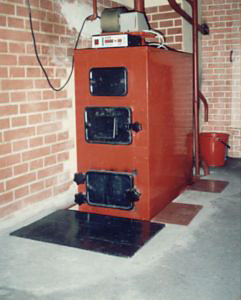The Understanding Of Central Heating System Works
Posted on: December 7, 2016
By: Alan O'Neill
Posted in: Air Conditioning
Central Heating System Installation In Houston Homeowners
A central heating system provides warmth to the whole interior of a building (or portion of a building) from one point to multiple rooms. When combined with other systems in order to control the building climate, the whole system may be an HVAC system.Central heating differs from space heating in that the heat generation occurs in one place, such as a furnace room in a house or a mechanical room in a large building The heat is distributed throughout the building, typically by forced-air through ductwork, by water circulating through pipes, or by steam fed through pipes.
Heating system works in your home, how gas is used to heat it, how regulators work, how the gas meter records usage, how your boiler works, how it’s checked for safety, how the water is circulated around your heating system and also the different parts that make up the your heating and water system.
Central Heating System Installation At Home
Central heating system has a primary heating appliance such as a furnace or boiler located in an out-of-the-way place such as a basement or garage. It delivers heat throughout the house either by pumping warmed air through a system of air ducts or sending hot water or steam through pipes to room radiators or convectors.
With both forced-air and gravity systems, one or more thermostats turn the heating or cooling unit off and on as room temperatures rise and fall. Homes without central heating normally utilize electric baseboard heaters or, in some cases, in-wall or in-floor gas heaters or radiant heat.
In contemporary homes, ducted air systems are the most common type of central heating and cooling. If your home has an air conditioner, heat pump, or furnace, it is a ducted air system. There are two main types: forced-air and gravity.
With a forced-air system, a furnace warms air, an air conditioner cools air, a heat pump either warms or cools air, and then a blower forces the heated or cooled air through the system and out into the living spaces.
With a gravity furnace, convection currents (caused by the natural tendency of hot air to rise) carry heated air through the system from a furnace located on or below the main floor. Gravity systems do not have blowers, tend to have very large air ducts, and can only deliver warmed air.
If your system includes an air conditioner or heat pump, it is a forced-air system. With these, cooled (and sometimes humidified or electronically cleaned) air is usually delivered through the same duct work and registers employed by heated air. An air conditioner runs on electricity and removes heat from air with basic refrigeration principles. Read more…
The Importance Of Central Heating System
The good thing about central heating systems is that they can be designed to cater for any size property. The various rooms and sizes are taken into account and then the right number of radiators will be installed in each room. The size of the radiator can influence the amount of heat you get coming out of it. Call (713) 812-7070 us for your home service and repair needs.
For more related articles and info visit Blog.
